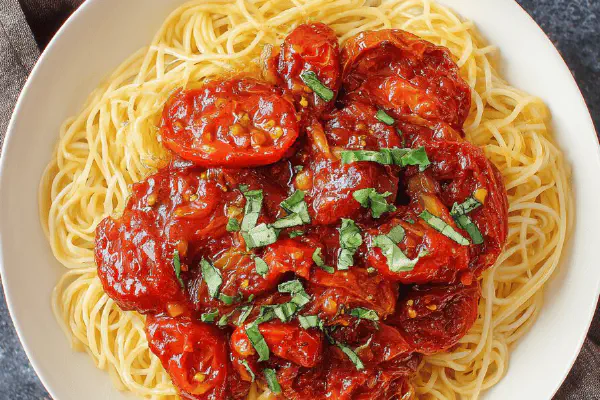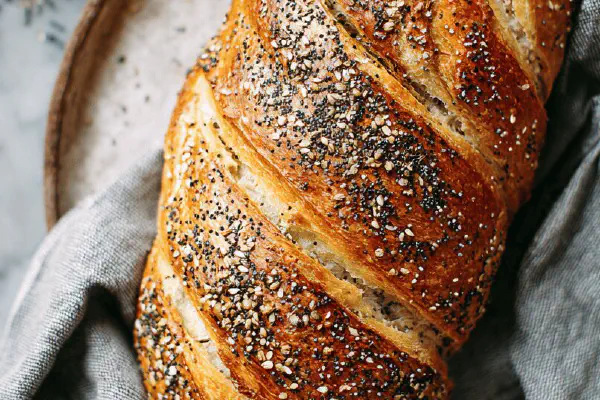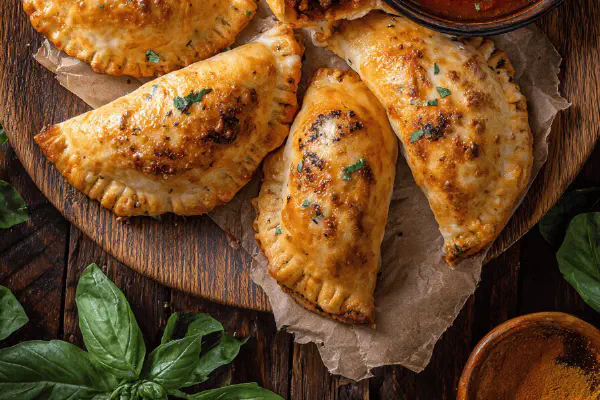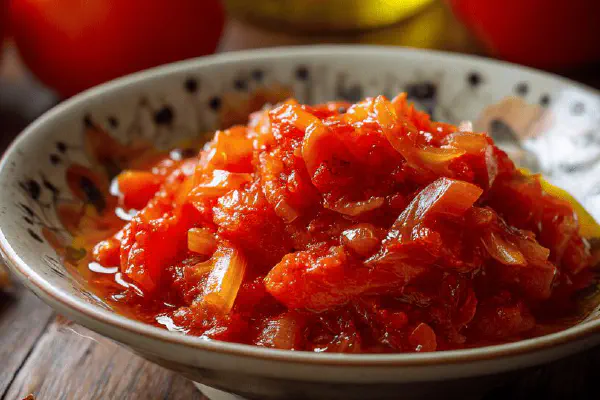Pasta Jar Mix Up
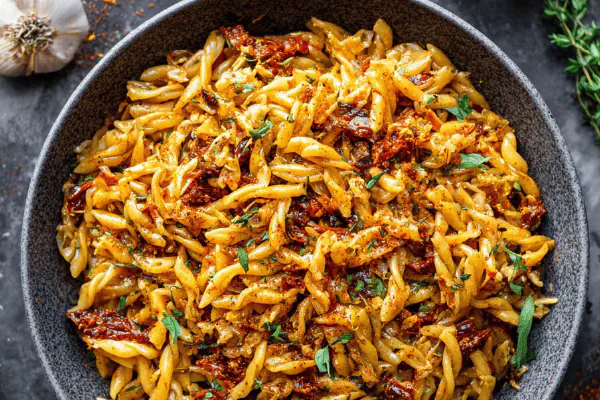
By Emma
Certified Culinary Professional
Ingredients
- 180 g short pasta (penne or rigatoni works well)
- 70 ml sun-dried tomatoes, chopped
- 3 ml dried thyme
- 3 ml smoked paprika
- 2.5 ml garlic powder
- 2.5 ml onion powder
- 2 dried bay leaves
- 1 pinch crushed cayenne pepper
About the ingredients
Method
Step 1
- Grab a clean 750 ml jar. Layer pasta in first, don’t compress. Add chopped sun-dried tomatoes on top; uneven layering creates better aroma release.
Step 2
- Sprinkle dried thyme and smoked paprika evenly over the tomatoes. The smoky paprika replaces basil for earthier warmth. Follow with garlic and onion powders, scatter bay leaves, then finish with cayenne. No pressing down, keep ingredients loose.
Step 3
- Seal tight. Label with cooking instructions: Boil 600 ml water, pour into pot, add jar contents, bring back to simmer. Stir occasionally, cover loosely.
Step 4
- Simmer about 15 minutes. Look for pasta swelling, bay leaves floating, tomato pieces softening. Smell garlic and paprika rounding out. Test pasta near rim—firm but tender, 'al dente' with slight bounce.
Step 5
- Drain if needed; sometimes little water remains. Stir well to mix flavors. Remove bay leaves—they’re just background notes. Serve immediately or add olive oil for silkiness.
Pro Tips
- Don’t swap fresh herbs—they lose punch in dry, long storage. Smoked paprika injects warmth without sweetness; skip if sensitive to smoky. If pasta stale, use fresh or whole wheat for nuttier texture. Substitute cayenne with black pepper for milder heat. Label jar with date to track freshness.
Backup Plan
- If you see odd discoloration or moisture in jar, toss dry mix—it won’t rehydrate well. For quick fixes, microwave uncovered for 2 mins, stirring once. Pasta might cook unevenly but saves time.
Efficiency Hack
- Layer ingredients in order of cooking times; pasta last if storing long to prevent sogginess. Use funnel for neat jar filling. Double seal lid after each session.
Cooking tips
Chef's notes
- 💡 Layer ingredients loosely. Pasta bottom first, no pressing down. Keeps aromas alive. Herbs release oils slow when heated. Avoid compacting or flavors get muted. Sun-dried tomatoes sit on top; thyme sticks well there. Pay attention to layering order for aroma migration. Funnel helps for neat fills. Tight seal stops moisture; no soggy pasta.
- 💡 Water temperature matters. Bring pot to rolling boil before adding jar contents. Stirring only after simmering helps pasta cook evenly. Listen for soft pop bubbles. Bay leaves float—visual alert that pasta is near doneness. Test pasta near jar mouth—bites give more info than timers. Adjust cook time if chewy or mushy, drain excess water if any left.
- 💡 Substitutions matter. Smoked paprika replaces basil—adds earthiness without sweetness. No smoked paprika? Use sweet paprika plus pinch liquid smoke or omit. Thyme swapped sometimes with oregano—oregano harsher but viable. Cayenne is a pinch only; can take black pepper for less heat. Keep bay leaves whole—not crushed. Avoid wet ingredients in jar to prevent mold.
- 💡 Storage is key. Dry, airtight jar crucial to prevent mold or stale pasta. Label jars with date. Longer storage shrinks pasta less than fresh—bump pasta quantity 10% to compensate. No sealing? Double bag after filling or use resealable bag tightly closed. If dry mix shows discoloration or moisture, toss. Microwaving jar open is backup but uneven cooking.
- 💡 Cooking cues come from senses. Smell garlic and smoky paprika rounding out as simmer progresses. Bay leaves bobbing signal liquid absorption. Bubbling sound changes from rolling boil to soft pops—indicator of simmer strength and pasta softening. Stir after cooking combines softened herbs and tomato bits. Remove bay leaves—they stay bitter otherwise. Oil drizzle post-cook adds silkiness.
Common questions
How to know pasta is done?
Look bay leaves floating, bubbles soft pop sounds. Test pasta edge near jar rim, bite for al dente feel. Firm with slight bounce means done. Cook longer if chewy. Avoid mushiness. Visual and tactile cues matter more than time alone.
Can I swap smoked paprika?
Sweet paprika works with a drop liquid smoke if you got that. Skip if sensitive. Oregano replaces thyme but harsher edge. Cayenne pinch can go black pepper for mild heat. Avoid fresh herbs; dry lasts longer. No wet in jar or will rot. Experiment but watch for mold risk.
What if water left after cooking?
Drain if too much, sometimes pasta sucks all water dry. Stir vigorously to mix flavors. Bay leaves must come out or bitterness. If pasta sticks after cooking, add 10% more water next time. Keep jar sealed well to avoid sogginess or stale pasta.
How to store dry mix?
Airtight jar best way; dry place. Use label with date to track freshness. Without jar seal, double bag tightly. Toss if moisture or odd color appears. Shelf life affected by herbs losing punch, swap fresh dried often. Don’t add wet ingredients inside jar.
